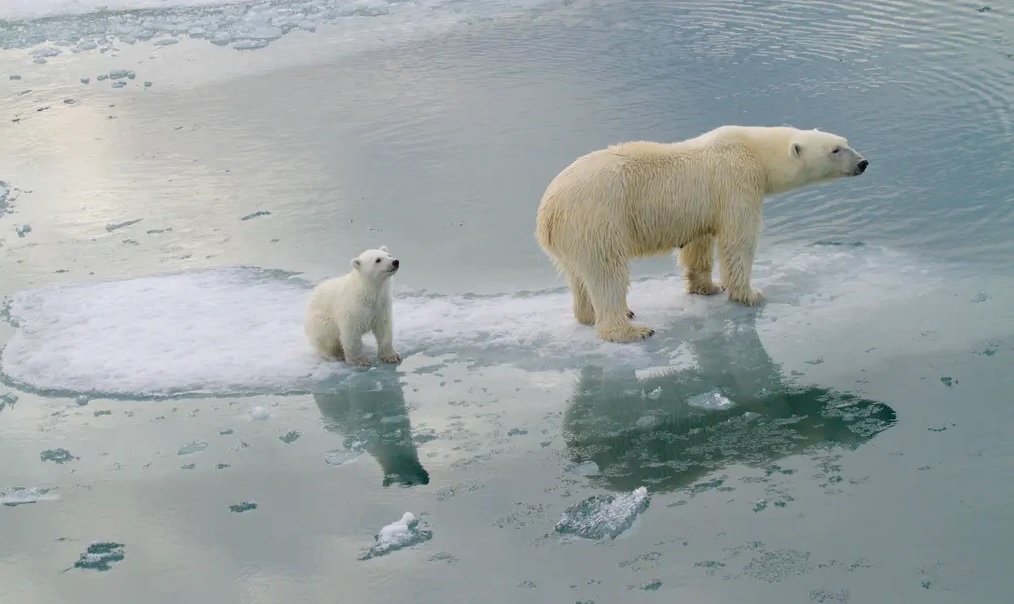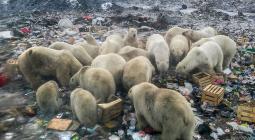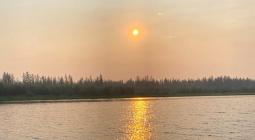Most polar bears to disappear by 2100, study predicts.
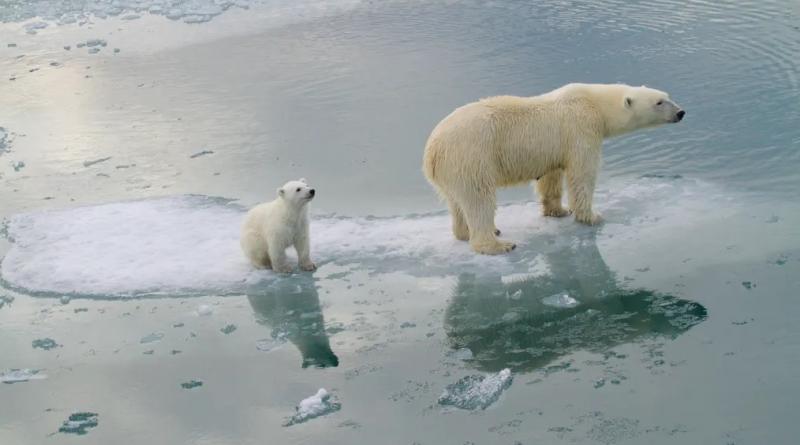
Melting Arctic sea ice could cause starvation and reproductive failure for many as early as 2040, scientists warn
Scientists have predicted for the first time when, where and how polar bears are likely to disappear, warning that if greenhouse gas emissions stay on their current trajectory all but a few polar bear populations in the Arctic will probably be gone by 2100.
By as early as 2040, it is very likely that many polar bears will begin to experience reproductive failure, leading to local extinctions, according to a study published in Nature Climate Change.
The study examines how the bears will be affected under two different greenhouse gas emissions scenarios. The researchers found that under a business-as-usual emissions scenario, polar bears will likely probably only remain in the Queen Elizabeth Islands – the northernmost cluster in Canada’s Arctic archipelago – at the end of the century. And even if greenhouse gases are moderately mitigated, it is still likely that the majority of polar bear populations in the Arctic will experience reproductive failure by 2080.
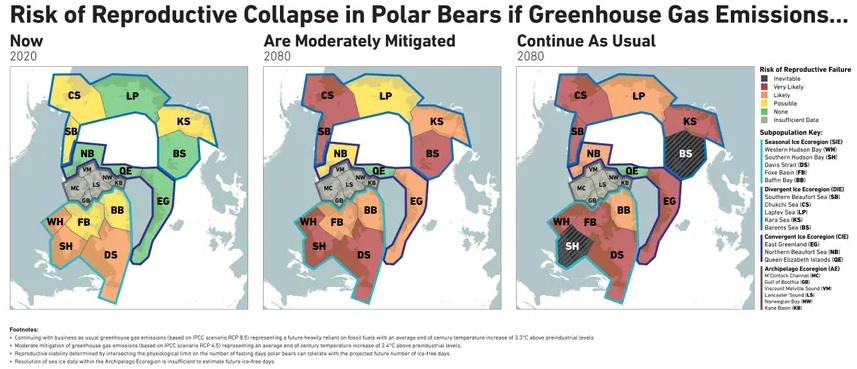
Scientists estimate that there are fewer than 26,000 polar bears left, spread out across 19 different subpopulations that range from the icescapes of Svalbard, Norway, to Hudson Bay in Canada to the Chukchi Sea between Alaska and Siberia. Polar bears are unable to find enough sustenance on land and rely on sea ice from which to hunt. They often stake out seal breathing holes in the ice, waiting hours for a blubbery meal to break the surface. But as that sea ice declines because of climate change, so, too, will the polar bears.
“It’s been clear for some time that polar bears are going to suffer under climate change,” said Péter Molnár, a biologist at the University of Toronto Scarborough, and lead author of the study. “But what was not fully clear was when we would expect major declines in the survival and reproduction of polar bears that could ultimately lead to their extirpation. We didn’t know whether that would happen early or later in this century.”
Polar bears draw on energy reserves built up during the winter hunting season to make it through lean summer months on land or time spent on ice in unproductive waters. Though the bears are used to fasting for months, their body condition, reproductive capacity and survival will eventually diminish if they are forced to go too long without food. In Alaska’s southern Beaufort Sea population, biologists have already seen polar bear numbers drop 25– 50% during low ice periods when the bears have been forced to fast for too long. And in western Hudson Bay, one of the southernmost polar bear habitats, the population has declined by roughly 30% since 1987.

To figure out when bears might reach their critical physiological limit, Molnár and his colleagues estimated how thin and fat polar bears can be and modelled the animals’ energy use to derive the threshold number of days they can fast before cub and adult survival rates decline. Then they combined those thresholds with the projected number of future sea ice-free days to determine how populations will be affected in different parts of the Arctic.
“Even if we mitigate emissions, we are still going to see some subpopulations go extinct before the end of the century,” Molnár said. This includes the polar bears in the vulnerable, southernmost ice areas of western Hudson Bay, Davis Strait, and southern Hudson Bay. “But we would have substantially more populations persisting by the end of the century, even with reduced reproduction, compared with a business-as-usual emissions scenario.”
The study examined 13 of the world’s 19 polar bear subpopulations, accounting for 80% of the total population of the species. Bears inhabiting an area known as the Archipelago ecoregion in the Canadian Arctic were not included as the geography of the area – islands and narrow channels – made it too difficult to predict future ice extent.
Of those studied populations, polar bears in southern Hudson Bay and Davis Strait in Canada are “very likely” to experience reproductive failure by 2040 in a scenario of unmitigated emissions. Polar bears in much of Alaska and Russia will be in serious trouble by 2080. And by 2100, it’s inevitable that these populations will experience reproductive failure, leading to extinction if countries don’t drastically reduce emissions of heat-trapping gases.
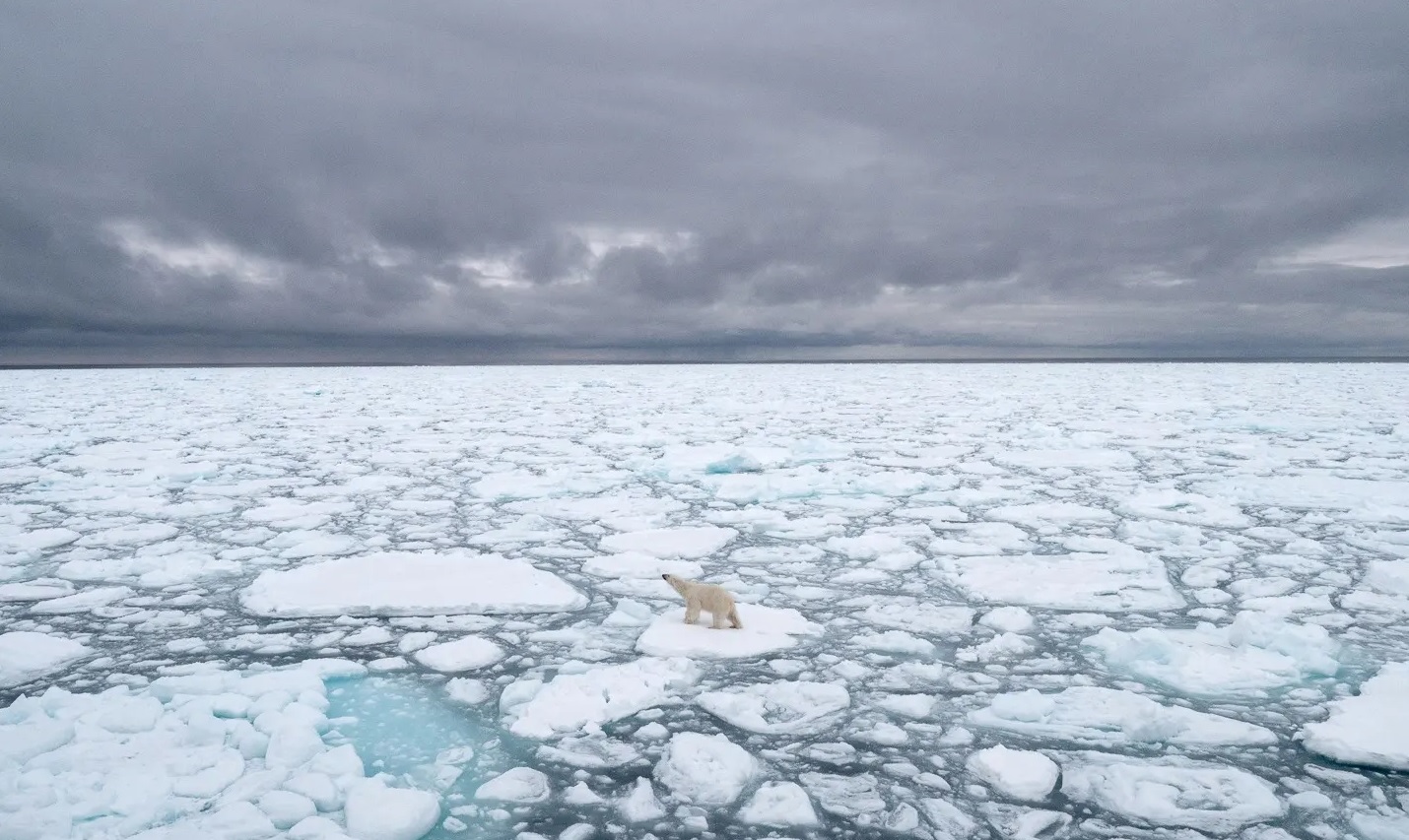
“It’s important to highlight that these projections are probably on the conservative side,” said Steven Amstrup, chief scientist for Polar Bears International and a co-author of the study. The models, he explained, may assume a better-than-reality body condition of the bears at the start of fasting periods. And the team used a cautious baseline estimate for how much energy a bear uses to maintain its body condition. “The impacts we project are likely to occur more rapidly than the paper suggests.”
Unlike other species threatened by hunting or deforestation, polar bears can only be saved if their habitat is protected, which requires tackling climate change at a global level. Previous research has shown that even if we reduce greenhouse gas emissions tomorrow, it will still take another 25 to 30 years for sea ice extent to stabilise because of all the carbon dioxide already in the atmosphere. It’s important that the public understand the urgency of the issue, Amstrup said. But a timeline for possible extirpation was also an important tool for managers in northern communities living alongside polar bears.
“It shows where we would expect to see increased human-bear conflict,” said Andrew Derocher, a biology professor at the University of Alberta who heads the Polar Bear Science Lab and is unaffiliated with the study. Not all Arctic communities have programmes in place to deal with more polar bears in their localities. And there is a moral question of whether humans should help struggling bears.
“With something like polar bears, where you’re not going to get their habitat back, it’s not clear we’re going to try to hold on to these populations everywhere. If we start to see a large number of bears on land dying of starvation, what kind of interventions would we get into?”
Derocher said polar bear managers needed to work out whether they would provide supplementary feed for the bears, or relocate them to regions that still had ice.
“You look at the fallout from one video of a starving bear. Well, imagine going to Churchill, Manitoba – a hub of polar bear tourism – and seeing 50 bears walking around like that. The public outcry is going to be intense and managers need to be thinking about what their policies are going to be now.”
Find more age of extinction coverage here, and follow biodiversity reporters Phoebe Weston and Patrick Greenfield on Twitter for all the latest news and features
20 July 2020
the guardian

